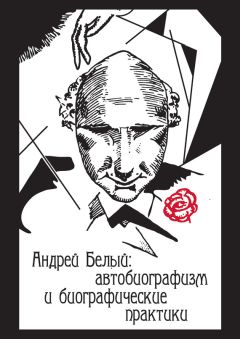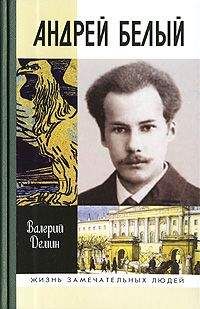Ознакомительная версия.
680
Alexandrov V. Andrey Belyj. Kotik Letaev, The Baptised Chinaman and Notes of an Eccentric // Andrey Bely: Spirit of Symbolism / Ed. J. Malmstad. Ithaca. N. Y., 1987. P. 145–170.
Among those who analysed the text in this perspective, see Boldyreva E. M. «Kotik Letaev» Andreja Belogo kak modernistskaja versija tradicionnoj avtobiografii // Russkaja klassika. Meždu archaikoj i modernom / Nauč. red. N. Michnovec, O. Evdokimova. SPb., 2002. S. 156–160.
Nalbantian S. Aesthetic Autobiography. Handmills, Basingstoke, Hampshire, 1994.
For a review see Possamai D. Che cos’è il postmodernismo russo? Cinque percorsi interpretativi. Padova, 2000.
See Byčkov B. B. Russkaja teurgičeskaja èstetika. M., 2007. S. 158–167, on the «forecast of post-culture» in Rozanov; Savel’eva M. Fedor Sologub. M., 2014. S. 230–231, where the author states that the novel «The created Legend» («Tvorimaja legenda») anticipates Russian postmodernism; Roberts G. The Last Soviet Avant-garde. OBERIU – Fact, fiction, metafiction. Cambridge, 1997.
Levina-Parker M. Tema v variacijach, ili Andrej Belyj – «Serijnyj avtobiograf» // Andrej Belyj v izmenjajuščemsja mire / Sost. M. Spivak, E. Nasedkina, I. Delektorskaja. M., 2008. S. 431–438; Levina-Parker M. Andrej Belyj. Put’ k raspjatiju kak aspekt serijnogo samosočinenija // Avtobiografija. 2014. T. 3. S. 93–128. See also: Versii Ja v memuarach Andreja Belogo. S. 251–274; Gilmore L. The Limits of Autobiography. Trauma and Testimony. Ithaca and London, 2001. P. 96.
Colonna V. Autofiction & autres mythomanies littéraires. Auch, 2004.
See my article «Epopeja» Andreja Belogo. Teoretičeskie aspekty i roždenie žanra «avtofikšn» v russkoj literature // Miry Andreja Belogo / Red. sost. K. Ičin, M. Spivak. M., 2011. S. 687–697, where I explain how Belyj’s works can be interpreted through Vincent Colonna’s theories on «author’s autofiction» (see footnote nr. 11 in this article). It is possible to hypothize that some autofictional elements can be showed at a structural level (e.g. voices, paratext, inter– and metatext). On this topic see my monograph in print, Rome, 2015.
Samé E. Autofiction. Père et Fils, S. Doubrovsky, A. Robbe-Grillet, H. Guibert. Dijon, 2013.
Ibid. P. 14.
Ibid. P. 81–85.
Armengaud F. Figures politiques de l’animalité dans la Cité grecque antique // Usages politiques de l’animalité / J. L. Guichet. Paris, 2008.
Doubrovsky S. Fils. Paris, 1977.
Kohl P. Autobiography as zoegraphy: Dmitrii A. Prigov’s «Zhivite v Moskve» // Avtobiografija. 2014. Vol. 3. P. 171–183.
See the interesting essay by Arkadij Bljumbaum: Bljumbaum A. Apollon i ljaguška // Sbornik v čest’60-letija A. Lavrova. Na rubeže dvuchstoletij. / Sost. V. Bagno, Dž. Malmstad, M. Malikova. M., 2009. S. 70–85.
See, among the others, the works of Chodasevič V. Ableuchovy—Letaevy—Korobkiny // Andrej Belyj. Pro et contra / Sost. A. Lavrov. SPb., 2004. S. 732–752; Beyer Jr. T. Andrej Belyj’s «The Christened Chinaman». Resolution of the Conflict of Filial Guilt // Russian Literature. 1981. Vol. 10. P. 369–380; Muller Cooke O. Pathological patterns in Andrej Belyj’s novels: «Ableuchovs—Letaevs—Korobkins» revisited // Russian Literature and Psychoanalysis / Ed. D. Rancour-Laferriere. Amsterdam. Philadelphia, 1989. P. 263–284; Ebert Chr. «Väter und Söhne» in Andrej Belyjs Roman «Peterburg» // Zeitschrift für Slawistik. 1990. Bd. 35. Hf. 5. S. 762–771; Ljunggren M. The Father—Son Drama: Peterburg as the Key to the Works of Andrej Belyj // Toronto Slavic Quarterly. 2014. Vol. 48. P. 55–68. http://sites.utoronto.ca/tsq/48/tsq48_ljunggren.pdf (10.01.2015).
I will quote from the following edition: Belyj A. Kreščenyj kitaec. München, 1969 (reprint). When quoting from this text, I will use «BC» followed by page number.
I will quote from the following edition: Belyj A. Moskovskij čudak. München, 1968 (reprint). When quoting from this text, I will use «ME» followed by page number.
I will quote from the following edition: Belyj A. Moskva pod udarom. München, 1968 (reprint). When quoting from this text, I will use «MJ» followed by page number.
John Elsworth maintains that «The Baptized Chinaman» is the closest work to the novel series «Moscow» under a stylistic point of view. See Elsworth J. Andrey Bely: A Critical Study of the Novels. Cambridge. 1983. P. 194–195.
Elsworth suggests that the dog is a sort of a double of Korobkin. His death can be read also through the perspective of an evolution towards reincarnation. Ibid. P. 187. The transmigration of souls is evoked by the same Korobkin after Tomočka’s death (ME 96–97).
Dal’ V. Slovar’ živogo velikorusskogo jazyka: http://www.slovari.ru/search.aspx?s=0&p=3068 (10.01.2015).
Gasparini P. Est-il je? Roman autobiographique et autofiction. Paris, 2004.
Публикация выполнена при поддержке гранта Российского научного фонда № 14–18–02709 «“Вечные” сюжеты и образы в литературе и искусстве русского модернизма» (2014–2016) в ИМЛИ РАН.
См.: Записки мечтателей. 1921. № 2/3. С. 114. Здесь и далее (за исключением специально оговоренных случаев) примечания Завалишина.
Там же. С. 119–120.
Там же. С. 119.
Белый А. Стихотворения. Берлин; Пг., 1923. С. 121.
Там же. С. 137.
Там же. С. 219.
Бердяев Н. Кризис искусства. М., 1918. С. 3.
Там же. С. 5.
Там же. С. 17–18.
Станиславский К. С. Работа актера над собой. М.; Л., 1948. С. 14.
Речь идет о неоднократно издававшейся книге Ап. Григорьева «Мои литературные и нравственные скитальчества» (примеч. публикатора).
Малевич К. Бог не скинут. Искусство, церковь, фабрика. Витебск, 1922. С. 3–4.
Там же. С. 27.
Белый А. Москва под ударом. Вторая часть романа «Москва». М., 1926. С. 197.
Литературная мысль. Пг., 1922. С. 75–76.
Там же. С. 78.
Белый А. Москва под ударом. М., 1926. С. 244.
Творчество Белого сравнивали с творчеством Дж. Джойса многие (Дж. Риви, Е. И. Замятин и др.), однако о сопоставлении, сделанном Валентином Стеничем, поклонником и переводчиком Джойса, нам неизвестно (примеч. публикатора).
Белый А. Московский чудак. Первая часть романа «Москва». М., 1926. С. 16–17.
Белый А. Петербург. Роман. Ч. I. Берлин, 1922. С. 130–131.
Литературная энциклопедия. Т. 1. М., 1929. Стб. 424.
Белый А. Котик Летаев. Пг., 1922. С. 33–34.
Там же. С. 41.
Там же. С. 292.
Повесть «Котик Летаев» была написана до революции – в 1915–1916 гг.(примеч. публикатора).
Белый А. Котик Летаев. Пг., 1922. С. 292.
Белый в романе «Москва под ударом» пишет о том, что «доктор Доннер» «проткнет земной шарик войной мировой» (Белый А. Москва под ударом. М., 1926. С. 151) (примеч. публикатора).
Литературная энциклопедия. Т. 1. Стб. 424. Текст цитаты исправлен по: Белый А. Москва под ударом. М., 1926. С. 215 (примеч. публикатора).
Ознакомительная версия.





